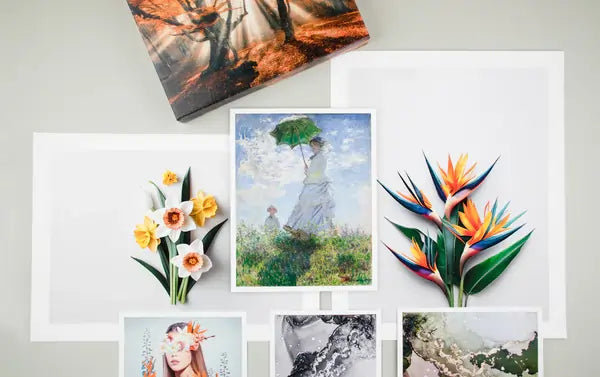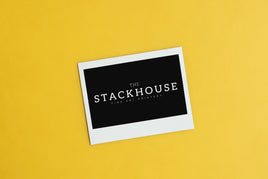TL;DR: Both paper and canvas prints have unique advantages. Paper excels in sharp detail and archival longevity, while canvas offers texture, depth, and a ready-to-hang presentation. The best choice depends on your style, subject, and display needs.
Paper vs. Canvas: Understanding the Difference
When it comes to turning artwork or photography into physical prints, both fine art paper and canvas deliver exceptional results — but in different ways. Fine art paper highlights crisp detail and smooth tones, while canvas adds dimension and character. Understanding the distinctions between these materials will help you decide which medium brings your art to life.
Printing on Fine Art Paper
Fine art paper is a classic choice for reproductions and photography. It’s made from acid-free cotton or cotton blends and features a soft, matte texture that enhances subtle tonal transitions. High-quality fine art paper can last over 100 years without yellowing or fading, making it a top choice for collectors and galleries.
While glossy or luster photo papers can add sheen, they tend to show reflections and degrade faster. Fine art paper offers superior archival quality with minimal glare — ideal for detailed photography, watercolor scans, or delicate illustrations. For more on paper surfaces, see our guide on choosing the best paper for photo prints.
Printing on Canvas
Canvas printing produces a more tactile and artistic look. The woven surface adds depth and texture, creating a painterly quality that transforms digital images into gallery-worthy pieces. Most canvases are made from cotton, polyester, or linen, providing strength and durability while maintaining excellent color retention. Canvas also resists glare, making it ideal for brightly lit rooms.
Unlike paper prints, canvas doesn’t require framing. Gallery-wrapped canvases arrive stretched and ready to hang, giving your artwork a clean, modern finish.
Which Option Is Better?
The choice between paper and canvas depends on your artwork’s purpose and aesthetic. If you want vivid texture, minimal glare, and a frameless presentation, canvas is the clear winner. Its durability and lightweight design make it easy to hang and display in almost any setting.
Fine art paper, on the other hand, is perfect for detailed photographs or prints requiring subtle tonal variation and a more traditional presentation. Framed fine art prints also offer a formal, timeless aesthetic that suits professional and archival settings.
Not sure which to choose? Compare materials with our free media sample set to see and feel the differences firsthand.
Final Thoughts
While both paper and canvas can beautifully display your artwork, canvas prints tend to offer more versatility and visual impact. They combine durability, texture, and ease of display — no frame required. For collectors and artists who want added depth or dimension, canvas brings the artwork to life in ways paper can’t replicate.
Ready to print your artwork? At The Stackhouse Printery, we specialize in fine art printing and canvas printing using archival inks and museum-grade materials. Visit our Order Page to start your next print project today.









